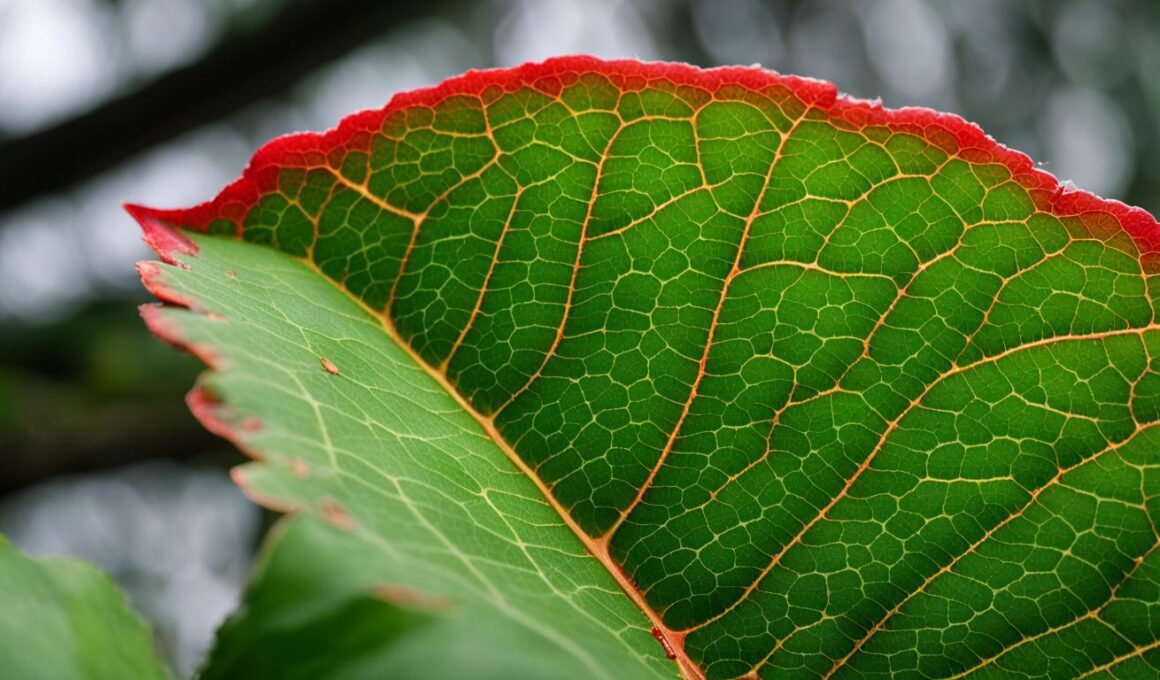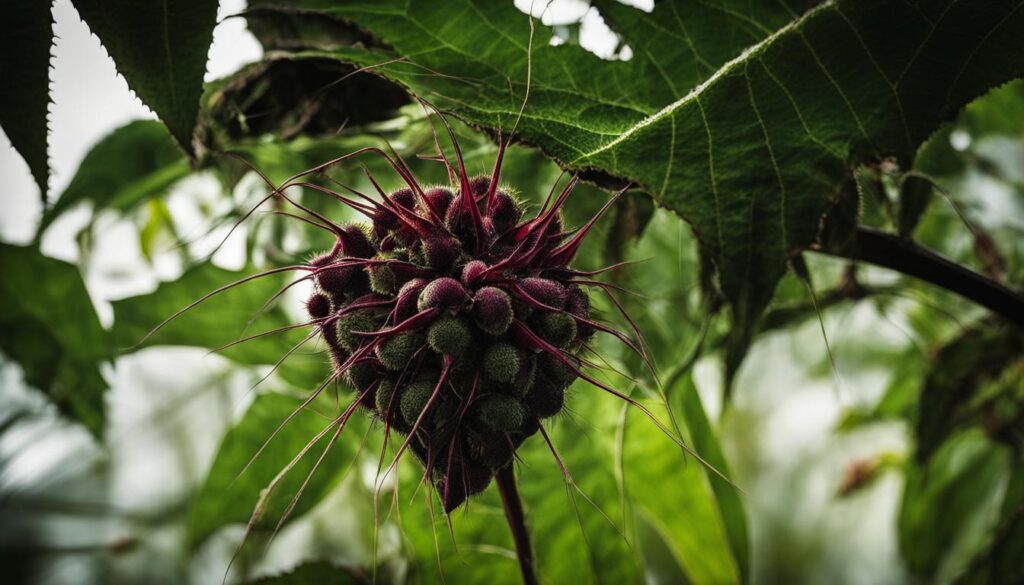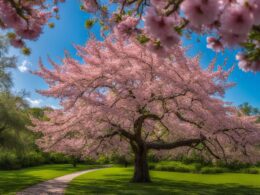Florida is home to a variety of poisonous plants that can pose a threat to the safety of humans, pets, and livestock. These plants contain chemical compounds that serve as a defense mechanism against insects and other threats. However, the toxicity of these plants can vary depending on factors such as the dosage, frequency and duration of exposure, route of exposure, plant part, maturity, time of year, and environmental conditions.
It is important to be aware of these factors and understand the potential dangers associated with certain plants. Many common plants found in gardens and natural areas in Florida can cause severe symptoms or even be fatal at low doses. Some examples of poisonous plants in Florida include rosary pea, castor bean, oleander, gloriosa lily, and king sago.
To ensure your safety while enjoying the outdoors in Florida, it is crucial to stay informed about poisonous plants and take necessary precautions. In this article, we will provide detailed information about specific poisonous plants found in Florida, their toxicity levels, and safety tips to help you stay safe. Whether you are a nature enthusiast, gardener, or simply curious about the flora in your area, this article will equip you with valuable knowledge to protect yourself and your loved ones.
Rosary Pea – A Highly Poisonous Plant in Florida
Rosary pea (Abrus precatorius) is a highly poisonous vine in the legume family that is native to the Old World but has become established in Florida. It is classified as a Florida noxious weed and is considered highly toxic. The seeds of rosary pea are particularly dangerous, containing a protein called abrin, which can be fatal at low doses when chewed, burned and inhaled, or injected under the skin. It is important to avoid contact with this plant and remove it from your garden if you have pets or small children.
Castor Bean – A Toxic Plant with Medicinal Uses
Castor bean (Ricinus communis) is a large, robust non-woody plant that is native to northern Africa but has escaped from cultivation and become established throughout Florida. While the seeds of castor bean contain the toxic protein ricin, they are also used commercially as a source of seed oil for various applications.
The toxic effects of ricin are more pronounced in humans and pets compared to ruminant livestock. Castor oil derived from the seeds is heat treated and refined to remove any toxic ricin. However, it is still important to exercise caution when handling this plant, especially if you have small children or pets.
- Castor bean plants are known for their large, palmate leaves and spiky fruit capsules.
- The Castor oil derived from the seeds of the plant has been used for centuries in traditional medicine for its laxative properties.
- Castor oil is also used in cosmetics, soaps, lubricants, and biodegradable plastics.
- While castor beans are toxic to humans and pets when ingested, they have been historically used for medicinal purposes in controlled doses.
Oleander – A Beautiful But Deadly Flowering Shrub
Oleander (Nerium oleander) is a heat- and drought-tolerant evergreen flowering shrub that is native to the Mediterranean region but has also escaped from cultivation and become established in Florida.
All parts of the oleander plant, including the milky latex produced by cut stems or leaves, contain cardiotoxic compounds that can impact heart function.
Oleander poisoning can occur through various means, such as eating honey made from oleander flowers, inhaling smoke from burning branches, or incorporating leaves or flowers in herbal teas.
It is important to exercise caution and prevent access to this plant, as it can be lethal to humans, pets, livestock, and wildlife.
- The oleander plant is known for its beautiful flowers and lush foliage, making it an attractive addition to gardens and landscapes.
- However, its toxic nature should not be underestimated, as even a small amount can have severe consequences.
- Children and pets are especially vulnerable to oleander poisoning, as they may be tempted to taste or chew on its leaves or flowers.
- It is crucial to educate yourself and your family about the dangers of oleander and take necessary precautions to avoid any exposure.
Do not handle oleander without gloves, as its sap can cause skin irritation and allergic reactions in some individuals.
If you suspect oleander poisoning, seek immediate medical attention, and if possible, bring a sample of the plant for identification.
Remember, prevention is key when it comes to oleander – keep it out of reach and never consume any part of this deadly flowering shrub.
Gloriosa Lily and King Sago – Additional Poisonous Plants in Florida
Florida is not only home to rosary pea, castor bean, and oleander, but it also harbors other poisonous plants that pose a threat to safety. Two such plants that Floridians should be cautious of are the Gloriosa Lily (Gloriosa superba) and King Sago.
The Gloriosa Lily, a common flowering vine found in Florida gardens, contains toxic compounds, including the alkaloid colchicine. Ingesting Gloriosa Lily can lead to colchicine poisoning, which primarily affects humans. Therefore, it is important to be aware of the potential dangers of this beautiful but dangerous plant.
Additionally, other types of garden lilies grown in Florida, such as amaryllis, daylilies, and rain lilies, also contain various toxic alkaloids and can cause poisoning if consumed. It is crucial to exercise caution when dealing with these plants to avoid any potential health risks.
To ensure your safety and the safety of your loved ones, familiarize yourself with the appearance, characteristics, and toxicity of these poisonous plants. By doing so, you can create a safer environment in your garden and protect your family from any harmful effects.
Remember, when it comes to poisonous plants in Florida, knowledge and awareness are key.
Note: The image above is for illustrative purposes only and does not depict Gloriosa Lily or King Sago.
Conclusion
It is crucial to be aware of the potential dangers associated with poisonous plants in Florida to ensure the safety of yourself, your loved ones, and your pets. Some plants can cause severe symptoms or even be fatal, even at low doses. Therefore, it is highly recommended to never consume a plant unless you are absolutely certain of its identity.
If you are interested in foraging for wild edible plants, it is essential to have sufficient knowledge and skills. It is best to embark on this activity in the company of an experienced forager who can help you identify the plants correctly and avoid any potential risks. Additionally, it is important to exercise caution when it comes to toxic lookalikes and to be mindful of any harmful compounds that may be present in the soil or water around plants.
By staying informed and taking necessary precautions, you can enjoy the beauty of Florida’s natural surroundings while minimizing the risks associated with poisonous plants. Remember, your safety and the safety of those around you should always be the top priority. Stay vigilant, be educated, and embrace the wonders of nature in Florida with peace of mind.
What Poisonous Plants Should I Look Out for in My Garden in Florida?
When tending to your garden in Florida, it’s important to be aware of poisonous plants like oleander, castor bean, and angel’s trumpet. These tall flowers for impact may be visually appealing, but they can pose a threat to your household and pets if ingested. Be sure to handle them with caution.










